Introduction
The 5th century, a pivotal epoch in the annals of human history, is a captivating tapestry woven with stunning events that reshaped the world in profound ways. Spanning from 401 to 500 AD, this century bore witness to a remarkable confluence of cultural, political, and societal transformations that indelibly altered the course of civilization. From the fall of empires to the rise of new powers, from remarkable cultural achievements to enduring legacies, the 5th century is an era that continues to intrigue and inspire. In this article, we embark on a compelling journey through time, delving into the stunning events that defined this turbulent and transformative century, offering a profound understanding of the foundations upon which our modern world was built.
Introduction
Here, we delve into the historical cataclysm that marked the end of a once-great empire. The Fall of the Western Roman Empire in 476 AD remains a defining moment in human history, characterized by a multitude of intriguing and lesser-known facts that will captivate your imagination.

A Complex Mosaic of Factors
The fall of the Western Roman Empire cannot be attributed to a single cause. It was a complex interplay of numerous elements that ultimately led to its downfall.
1. Barbarian Invasions
The Western Roman Empire faced relentless assaults from various barbarian tribes, including the Visigoths, Vandals, and Huns. The relentless pressure on its borders strained its military resources and weakened its defenses.
2. Economic Decline
The empire’s economy, once the envy of the world, was in a state of decline. Currency devaluation, rampant inflation, and overreliance on slave labor led to economic instability.
3. Political Turmoil
The Western Roman Empire saw a revolving door of emperors, many of whom were short-lived and incapable of providing stable leadership. The power struggle further weakened the state.
4. Administrative Issues
The empire’s vast expanse posed administrative challenges, leading to corruption, inefficiency, and the mismanagement of resources.
The Final Act: Odoacer and the Fall
In 476 AD, the Western Roman Empire met its end when the Germanic chieftain Odoacer deposed the last Roman emperor, Romulus Augustulus. The event is noteworthy for several reasons:
- Odoacer’s act marked the first time in centuries that there was no Roman emperor ruling the western territories.
- This act effectively signaled the end of a united Roman Empire, with the Eastern Roman Empire (Byzantine Empire) continuing for nearly another millennium.
- It set the stage for the rise of the successor kingdoms and the transformation of Europe.
The Aftermath
The fall of the Western Roman Empire had profound and lasting consequences:
- Europe entered a period known as the Dark Ages, characterized by political fragmentation and cultural decline.
- New kingdoms and empires emerged, such as the Kingdom of the Franks, the Visigothic Kingdom, and the Ostrogothic Kingdom.
- The cultural and intellectual heritage of Rome continued through the preservation of ancient texts by monastic scholars.
An Archaeological Perspective
Archaeological evidence offers a unique glimpse into the final days of the Western Roman Empire. Recent discoveries have shed light on the lives of both commoners and elites during this turbulent period.
Conclusion
The Fall of the Western Roman Empire in 476 AD is a captivating episode in history, marked by a convergence of factors that sealed the empire’s fate. This article has offered a detailed exploration of the events, causes, and aftermath of this significant historical event. Understanding these complexities provides a more profound insight into the past and the evolution of the modern world.
Attila the Hun’s Invasions of Europe: Unveiling the Scourge of God


- The Wrath of Attila: Attila the Hun, a fearsome warrior and military genius, led a relentless onslaught across Europe in the 5th century. His ruthless tactics and unwavering determination earned him the ominous title “Scourge of God.”
- The Battle of the Catalaunian Plains: One of the most significant battles in history, the Battle of the Catalaunian Plains in 451 AD saw Attila’s Huns clash with a coalition of Roman and Germanic forces led by the Roman general Flavius Aetius. The battle’s outcome had far-reaching implications for the fate of Europe.
- Hunnic Terror: Attila’s terrifying reputation often led cities and nations to surrender without a fight. The Huns’ swift and brutal raids instilled fear throughout Europe, prompting desperate pleas for negotiation.
- Diplomatic Skill: Attila was not merely a brute force conqueror. He was known for his diplomatic acumen, often using the threat of invasion as a negotiating tool. He demanded immense tributes from the Roman Empire, amassing immense wealth and power.
- The Fabled “Sword of Mars”: Legend has it that Attila possessed a mythical sword believed to be the “Sword of Mars.” It was said to have been discovered by shepherds in a meteorite and bestowed upon him by divine favor, adding to his mystique.
- The Hunnic Empire: Attila’s conquests extended across vast territories, including modern-day Hungary, Germany, and parts of France. His empire rivaled the Roman Empire in its scope and power.
- Death and Disintegration: Attila’s sudden death in 453 AD, on the night of his wedding, marked the beginning of the decline of the Hunnic Empire. His passing led to infighting among his sons, ultimately resulting in the dissolution of their formidable confederation.
- The Impact on Europe: Attila’s invasions and the subsequent fragmentation of his empire played a role in reshaping the political landscape of Europe, contributing to the eventual fall of the Western Roman Empire and the migrations of numerous tribes.
- Cultural Legacy: The memory of Attila the Hun continued to loom large in European folklore and literature, leaving an enduring mark on the continent’s collective imagination.
- Modern Resonance: Attila’s invasions serve as a reminder of the transient nature of empires and the profound impact a determined leader can have on the course of history. His legacy continues to intrigue historians and enthusiasts alike.
The Sack of Rome by the Visigoths (410 AD): Unveiling the Fall of the Eternal City
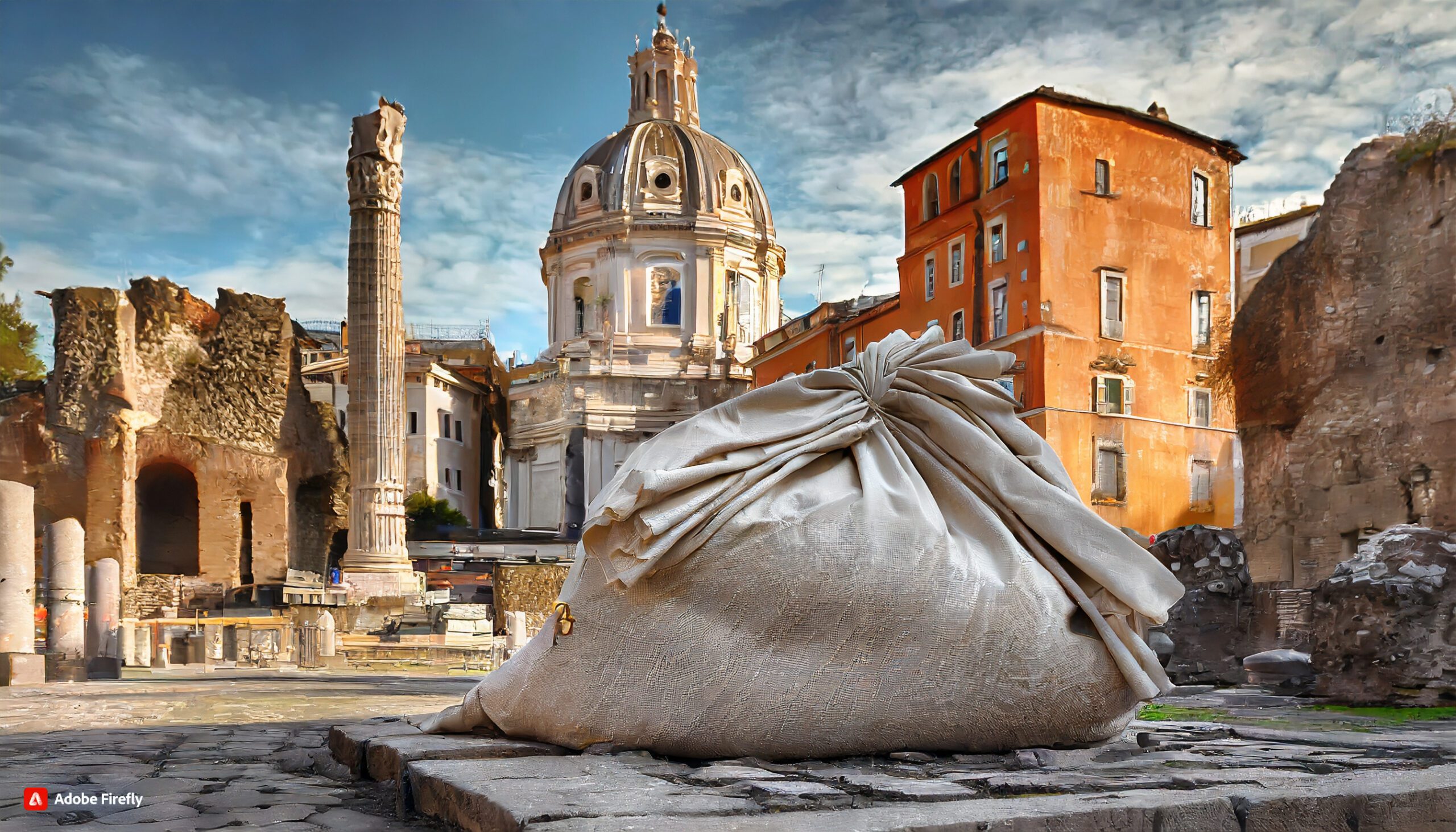

- The Eternal City Breached: In 410 AD, Rome, often considered impregnable, fell to the Visigoths under the leadership of King Alaric. This event marked the first time in nearly 800 years that Rome had been sacked.
- Visigothic Quest for Recognition: Alaric’s motivation for the sack of Rome was not mere plunder but a bid for recognition and negotiation with the Roman authorities. He sought to secure land and status within the Roman Empire for his Visigothic people.
- The Gothic Siege: Prior to the sack, Rome endured a lengthy and uneasy siege. The Roman populace suffered from famine and disease while Alaric’s forces encircled the city.
- Influence on Augustine’s “City of God”: The sack of Rome had a profound impact on Saint Augustine, who was in the city at the time. It inspired him to write his magnum opus, “The City of God,” which explored the concept of the heavenly city as distinct from earthly powers.
- Symbolic Decline of the Western Roman Empire: The sack of Rome by the Visigoths is often seen as a symbolic moment in the decline of the Western Roman Empire. It exposed the vulnerability of the once-mighty city and the empire’s inability to protect its heart.
- Subsequent Barbarian Invasions: The Visigothic sack of Rome was followed by a series of other barbarian invasions, including those by the Vandals and the Huns, contributing to the eventual fall of the Western Roman Empire in 476 AD.
- Sacking, not Total Destruction: Unlike later sackings of Rome, Alaric’s Visigoths did not systematically destroy the city. They took valuable goods and took hostages but left much of the infrastructure intact.
- Religious Tolerance: The Visigoths, in contrast to their reputation as invaders, were relatively tolerant of religious practices. They were Arian Christians but did not persecute the Roman Catholic population.
- Legacy of the Visigoths: The sack of Rome by the Visigoths represents a chapter in the broader story of the migrations and invasions that reshaped Europe during the late Roman period and the early Middle Ages.
- Historical Enigma: The sack of Rome remains an enigmatic event, sparking ongoing historical debates and discussions about its causes, consequences, and significance in the context of the fall of the Western Roman Empire.
The Vandals Sack Rome (455 AD): Unveiling the Forgotten Pillage of the Eternal City


- Vandals on the Move: The Vandals, a Germanic tribe led by King Genseric, launched their audacious attack on Rome in 455 AD, marking a devastating chapter in the city’s history.
- Theater of Political Intrigue: The sack of Rome by the Vandals was not merely an act of barbaric plunder. It was deeply entangled in the complex politics of the Western Roman Empire, with Genseric using the opportunity to exert pressure on the ruling elites in Rome.
- Second Sack in Less Than Half a Century: Rome had already suffered the Visigothic sack in 410 AD. The Vandal invasion in 455 AD dealt yet another blow to the city, revealing the ongoing vulnerability of the Western Roman Empire.
- Three Months of Looting: The Vandals’ occupation of Rome lasted for a harrowing three months, during which time the city was subjected to extensive looting and plunder.
- A Fleet-Based Invasion: Genseric’s forces didn’t approach Rome by land but rather by sea. Their powerful navy allowed them to navigate up the Tiber River and launch a surprise attack on the city.
- Sacking of the Imperial Palace: The Vandals’ plunder extended to the heart of the Roman Empire, including the Imperial Palace, where they seized numerous treasures and even took the Western Roman Empress, Eudoxia, and her two daughters as hostages.
- The Loss of Ancient Artifacts: The Vandals stripped Rome of countless priceless artworks, sculptures, and other cultural treasures. Many of these artifacts were never recovered and remain lost to history.
- Political Consequences: The sack of Rome by the Vandals further weakened the Western Roman Empire’s prestige and authority, hastening its eventual fall in 476 AD.
- The Relatively Peaceful Withdrawal: After three months of devastation, the Vandals withdrew from Rome without causing the kind of widespread destruction seen in later sackings of the city. This relatively peaceful exit added to the mystery surrounding their motives.
- Legacy of the Vandals: The Vandal sack of Rome is often overshadowed by the Visigothic sack in 410 AD, but it played a significant role in the erosion of Roman power in the Western Mediterranean, contributing to the unraveling of the Western Roman Empire.
The Vandal sack of Rome in 455 AD remains a captivating yet lesser-known episode in the city’s tumultuous history, reflecting the intricate web of politics, power struggles, and the enduring allure of Rome as a prize to be seized by opportunistic invaders.
The Council of Chalcedon (451 AD): Defining the Nature of Christ
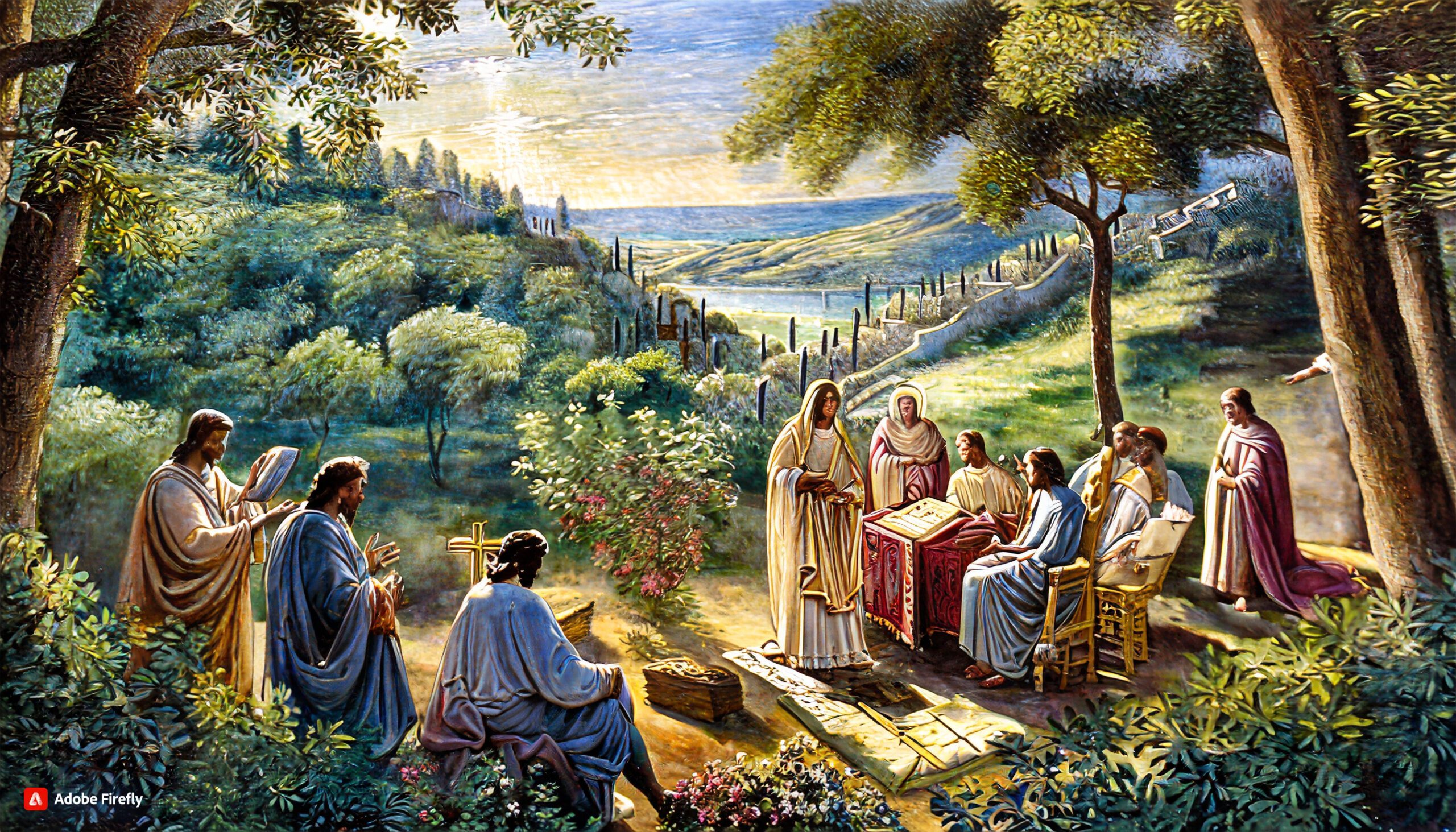

- Backdrop of Doctrinal Disputes: The Council of Chalcedon convened in 451 AD against a backdrop of deep theological disputes concerning the nature of Christ. These disputes had significant implications for the Christian Church.
- Chalcedon’s Location: Chalcedon, an ancient city in Asia Minor (modern-day Kadıköy, Turkey), served as the council’s meeting place, situated across the Bosporus from Constantinople.
- Christological Controversies: The council aimed to address the ongoing debates regarding Christ’s nature. Specifically, it sought to reconcile the positions of those who believed in the divine and human natures of Christ with those who held other theological views.
- Definition of Chalcedon: The council’s defining statement, known as the Chalcedonian Definition, established that Christ had two distinct natures, one fully divine and one fully human, existing in perfect union, without confusion or separation. This definition became a cornerstone of orthodox Christian theology.
- Rejecting Heresies: The Council of Chalcedon rejected several theological positions as heretical, including Nestorianism (which emphasized the separation of Christ’s natures) and Monophysitism (which argued for a single, combined nature in Christ).
- Religious and Political Significance: The council had both religious and political significance. It not only settled a crucial theological matter but also had the approval of the Roman Emperor Marcian, further solidifying its authority.
- Attendance of Bishops: The council was attended by over 500 bishops from various Christian dioceses, making it one of the largest and most significant ecumenical councils in the history of Christianity.
- Impact on Church Unity: While the Council of Chalcedon succeeded in defining the orthodox Christological position, it did not completely resolve all theological disputes. The disagreements that persisted contributed to schisms within the Christian Church, notably leading to the emergence of the Oriental Orthodox Churches, which rejected the Chalcedonian Definition.
- Continued Relevance: The Chalcedonian Definition continues to be a foundational theological text in many Christian traditions, including the Roman Catholic Church, the Eastern Orthodox Church, and various Protestant denominations.
- Historical Legacy: The Council of Chalcedon is remembered as a pivotal moment in the development of Christian theology, providing critical insights into the understanding of Christ’s nature and influencing the course of Christian doctrine and practice for centuries to come.
The Glorious Ascent: Rise of the Gupta Empire in India (c. 320-550 AD)
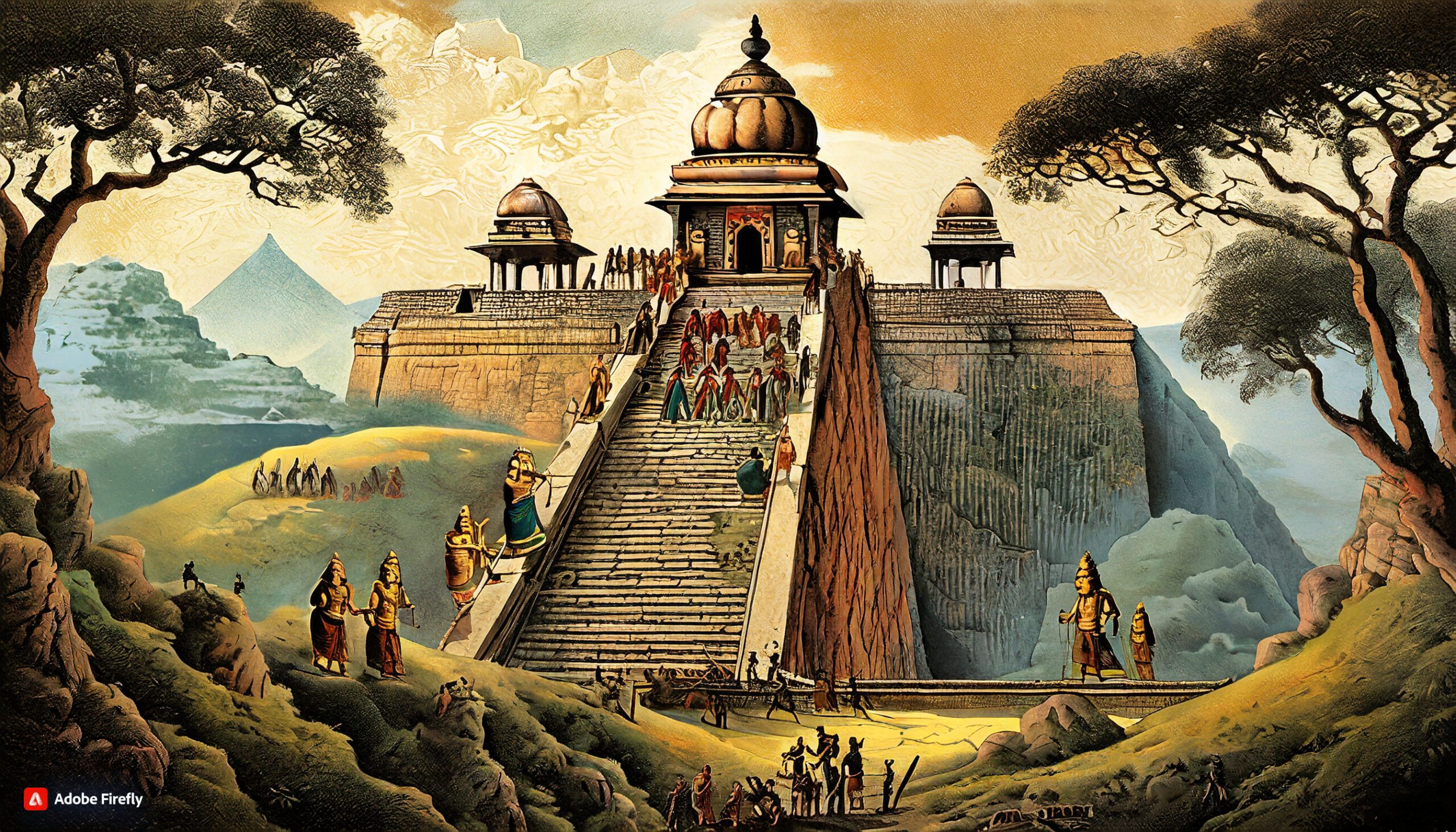

- Historical Context: The rise of the Gupta Empire marked a significant period in Indian history, situated between the fall of the Maurya Empire and the subsequent fragmentation of the subcontinent into multiple regional powers.
- Founding of the Dynasty: The Gupta dynasty, founded by Maharaja Sri Gupta, emerged around 320 AD in the Magadha region (modern-day Bihar, India).
- Chandragupta I: Chandragupta I, the son of Sri Gupta, is often credited with expanding the Gupta realm. He married a Licchavi princess, which strengthened the dynasty’s influence in northern India.
- Golden Age of India: The Gupta Empire is often referred to as the “Golden Age of India.” During their rule, the subcontinent experienced an era of remarkable progress in various fields, including art, science, mathematics, and literature.
- The Gupta Kings: Notable Gupta rulers included Samudragupta, who is celebrated for his military conquests and the “Prayag Prashasti,” an inscription detailing his achievements, and Chandragupta II, who oversaw the empire’s height.
- Patronage of the Arts and Sciences: The Gupta rulers were renowned for their patronage of scholars, artists, and scientists. This support led to significant advancements in fields like astronomy, mathematics (the concept of zero), and the flourishing of classical Sanskrit literature.
- Aryabhata’s Contributions: The mathematician and astronomer Aryabhata, a key figure in Indian science, made significant breakthroughs during the Gupta era. His work laid the foundation for future developments in mathematics and astronomy.
- Ajanta Caves and Artistic Achievements: The Gupta period is renowned for its cave architecture and art, notably the magnificent Ajanta Caves. These cave temples are adorned with exquisite frescoes and sculptures that reflect the artistic excellence of the time.
- Religious Tolerance: The Guptas promoted religious tolerance, with a special affinity for Hinduism and Buddhism. Under their rule, both religions flourished, and several Buddhist monasteries and universities received royal patronage.
- Disintegration and Legacy: Despite the Gupta Empire’s zenith, it gradually disintegrated due to various factors, including Hun invasions. By the mid-6th century, the empire had fragmented into smaller states. However, the Gupta legacy endured through their contributions to Indian culture, knowledge, and the lasting impact on the subcontinent’s history.
The rise of the Gupta Empire in India, from its humble beginnings to its status as a bastion of culture, science, and art, represents a pivotal chapter in the history of the Indian subcontinent. The period’s enduring contributions continue to influence modern India and its global cultural significance.
The Anglo-Saxon Migration: Shaping the Foundations of England
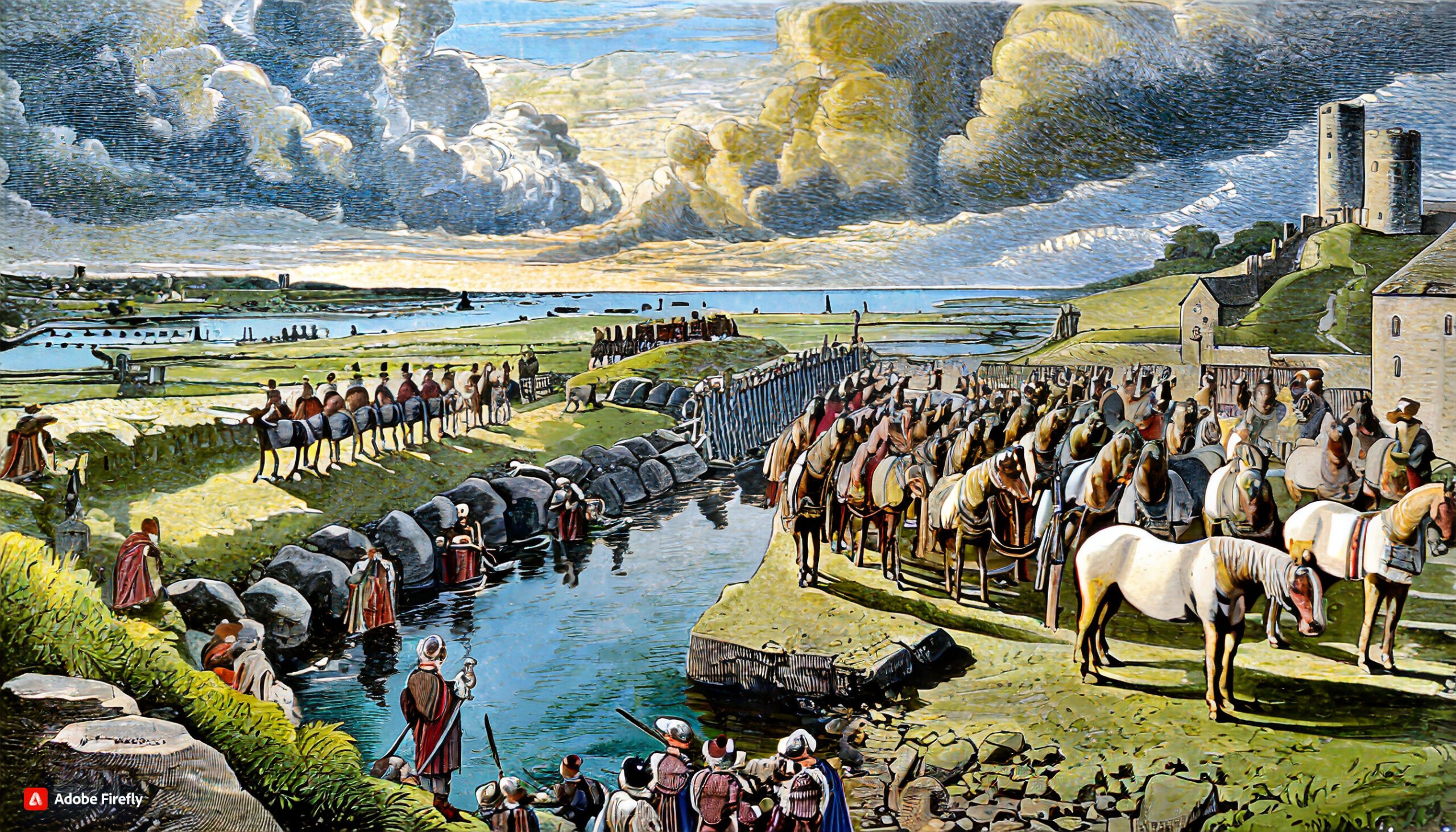

- Historical Context: The arrival of the Anglo-Saxons in England, which began in the 5th century AD, marked a pivotal moment in British history. It laid the groundwork for the formation of the English nation.
- Germanic Tribes: The Anglo-Saxons were a group of Germanic tribes, including the Angles, Saxons, and Jutes, who migrated from the European continent to the British Isles.
- Hengist and Horsa: The traditional account of the Anglo-Saxon arrival is linked to Hengist and Horsa, who, according to legend, were two brothers that led the first wave of Anglo-Saxon settlers.
- Early Settlements: The Anglo-Saxons initially established small kingdoms in southeastern England. These early territories would later become the foundations of the Heptarchy, a collective term for the seven Anglo-Saxon kingdoms.
- Conflicts with Britons: The Anglo-Saxons encountered resistance from the native Britons, who were pushed westward by the incoming settlers. This period of strife is chronicled in historical writings like “The Anglo-Saxon Chronicle.”
- Conversion to Christianity: Over time, the Anglo-Saxons gradually converted to Christianity. The mission of St. Augustine to Kent in 597 AD is often seen as a key turning point in this religious transformation.
- Emergence of Wessex: The Kingdom of Wessex, under the leadership of rulers like Alfred the Great, played a significant role in resisting Viking invasions in the 9th century and ultimately in unifying England.
- Language and Culture: The Anglo-Saxon settlers brought their language and culture, which evolved into what we now recognize as Old English. This language had a profound influence on the development of the English language.
- Literature and Art: The Anglo-Saxons are known for their rich literary and artistic heritage, including epic poems like “Beowulf” and intricately crafted jewelry and metalwork.
- Legacy: The arrival of the Anglo-Saxons was a pivotal moment in English history. It contributed to the development of a unique English identity and culture, laying the foundations for the future kingdom of England and, eventually, the United Kingdom.


The arrival of the Anglo-Saxons in England, with their language, culture, and influence, represents a crucial chapter in the formation of the English nation and its rich historical heritage.
The Battle of the Catalaunian Plains (451 AD): Defeat of the Huns in the Heart of Europe


- Historical Significance: The Battle of the Catalaunian Plains, also known as the Battle of Châlons, is a pivotal event in European history. It took place in 451 AD between the forces of the Roman Empire and the Huns, led by their fearsome leader, Attila.
- Alliance Against the Huns: The battle was a result of a coalition formed to halt the relentless advance of the Huns into Western Europe. The Roman general Flavius Aetius, with an army comprising Romans, Visigoths, and other tribes, confronted the Huns under Attila.
- Strategic Location: The battle was fought near Châlons-en-Champagne in modern-day France. Its location held crucial importance, as it was at a crossroads for different invading forces.
- Violence and Bloodshed: The Battle of the Catalaunian Plains was a brutal and bloody conflict. It is estimated that tens of thousands of soldiers perished in the engagement, making it one of the largest battles of the time.
- Unpredictable Outcome: The outcome of the battle was uncertain, and it could have gone either way. Both sides suffered significant casualties, and it was a decisive engagement that would shape the future of Europe.
- Death of Theodoric: The Visigothic king, Theodoric I, died in the midst of the battle, causing confusion and grief among the Visigothic ranks. This further highlighted the intense nature of the conflict.
- Strategic Stalemate: While the battle did not result in a clear victory for either side, it did halt Attila’s advance into Western Europe. Attila withdrew his forces following the conflict.
- Aftermath: The Battle of the Catalaunian Plains is often seen as a turning point in the Hunnic invasions. It marked the beginning of the decline of the Hunnic Empire and a shift in the power dynamics of Europe.
- Legacy: The battle’s impact extended beyond its immediate consequences. It highlighted the significance of alliances among different tribes and nations in resisting external threats and contributed to the development of medieval Europe.
- Historical Mystery: Despite its importance, the exact details of the battle remain a historical enigma, and the site of the Catalaunian Plains has yet to be conclusively identified, adding an element of intrigue to this critical moment in European history.
The Battle of the Catalaunian Plains was a defining moment in the struggle between the Huns and the forces of Western Europe. Its inconclusive outcome shaped the continent’s future and the balance of power between various nations and peoples.
Arthurian Legends in Britain: Unraveling the Myth of King Arthur
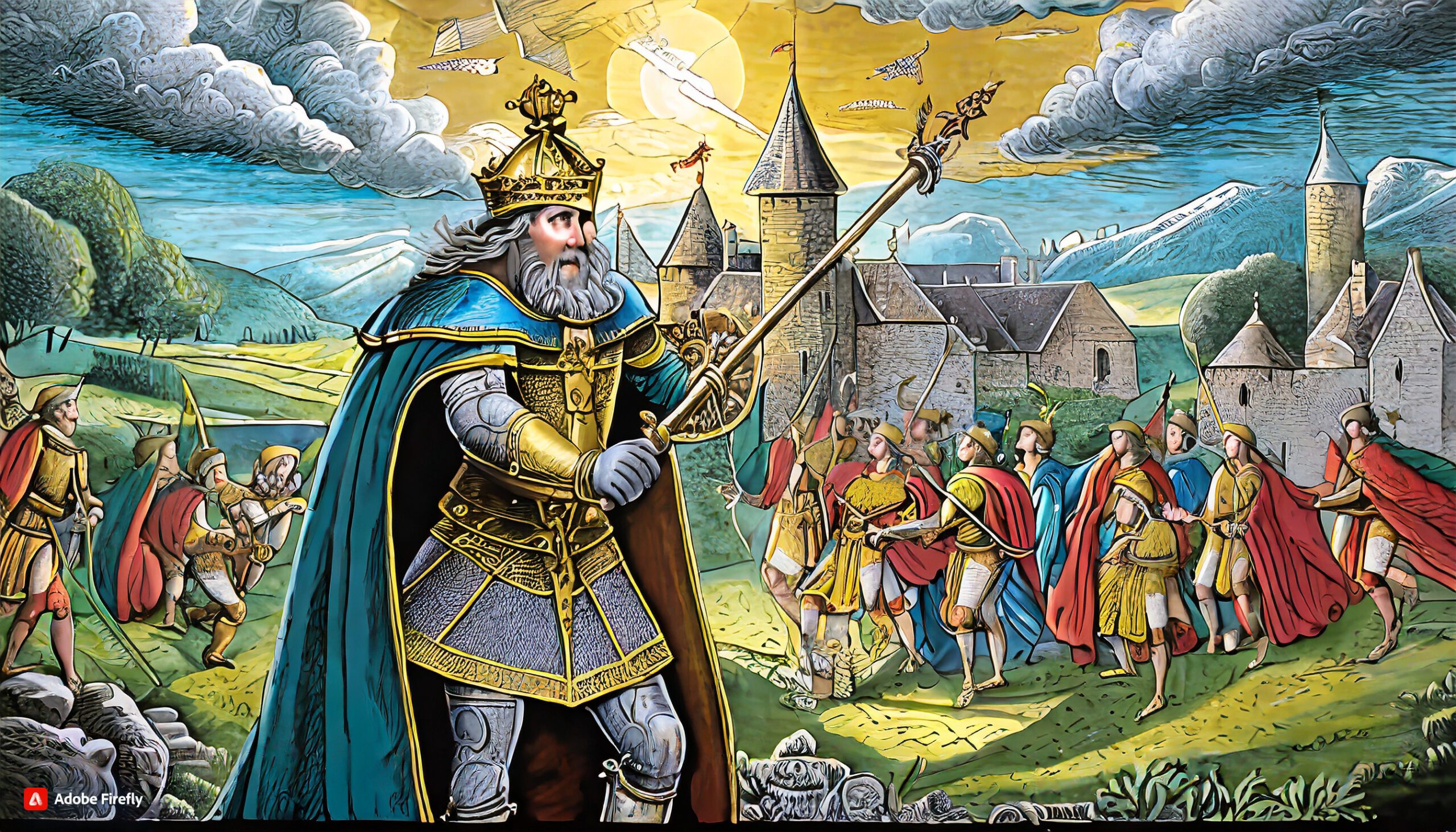

- Legendary Origins: Arthurian legends are a collection of stories, myths, and folklore surrounding the legendary King Arthur. These tales have been a prominent part of British folklore and literature for centuries.
- King Arthur: King Arthur is depicted as a semi-historical figure who is said to have led the Britons against Saxon invaders in the 5th or 6th century. The exact historical existence of Arthur remains a subject of debate among scholars.
- The Sword in the Stone: One of the most famous tales associated with Arthur is the story of the Sword in the Stone. According to legend, only the true king of Britain could pull the sword from the stone, and Arthur successfully did so, establishing his right to rule.
- Camelot: Arthur is said to have ruled from the fabled city of Camelot, which has become synonymous with the notion of an idyllic and chivalrous realm. The legend of Camelot has inspired countless literary and artistic works.
- The Knights of the Round Table: King Arthur’s court was renowned for its Knights of the Round Table, a band of noble and chivalrous knights who embarked on quests and adventures. Sir Lancelot, Sir Gawain, and Sir Galahad are some of the most well-known knights.
- The Holy Grail: The Arthurian legends feature the quest for the Holy Grail, believed to be the cup used by Jesus Christ at the Last Supper. Knights like Sir Percival and Sir Galahad sought this sacred relic.
- Merlin the Wizard: Merlin, the enigmatic wizard and advisor to King Arthur, played a crucial role in many Arthurian tales. His magical abilities and foresight guided Arthur’s reign.
- Lady of the Lake: In Arthurian legend, the Lady of the Lake is a mystical figure who presents Arthur with the sword Excalibur. She also plays a role in raising Sir Lancelot.
- Chivalry and Romance: The Arthurian legends are known for promoting ideals of chivalry, honor, and courtly love. These stories have had a lasting influence on the concept of medieval romance.
- Enduring Legacy: The legends of King Arthur have endured through the centuries and continue to captivate the imagination of people worldwide. They have been a source of inspiration for countless novels, films, and adaptations.
- Historical Debates: The historical basis for King Arthur’s existence remains a matter of debate among historians. While some argue that Arthur was a real figure, others see him as a legendary composite character.
- Geoffrey of Monmouth: The 12th-century writer Geoffrey of Monmouth’s “Historia Regum Britanniae” played a significant role in popularizing the Arthurian legends.
Arthurian legends hold a special place in the folklore and literature of Britain, representing a timeless narrative that embodies the ideals of honor, chivalry, and the eternal quest for justice and truth.
The Compilation of the Talmud: Preserving Jewish Tradition (c. 500 AD)


- Talmud Defined: The Talmud is a central text in Rabbinic Judaism, composed of the Mishnah and the Gemara. It serves as an extensive commentary on the Torah and contains discussions of Jewish law, ethics, customs, and traditions.
- Mishnah’s Foundation: The Mishnah, the core component of the Talmud, was compiled by Rabbi Judah the Prince (Judah HaNasi) around 200 AD. It organized and codified Jewish oral law, which had been transmitted orally for generations.
- Expansion with the Gemara: The Gemara, an expansion and commentary on the Mishnah, was developed in two locations: the Palestinian Talmud (Jerusalem Talmud) and the Babylonian Talmud. The Babylonian Talmud, completed around 500 AD, is the more comprehensive and widely studied of the two.
- Differing Versions: The two Talmuds, the Babylonian and the Palestinian, share similarities but also have notable differences. The Babylonian Talmud is more extensive and influential, and it has had a profound impact on Jewish law and tradition.
- Babylonian Exile’s Influence: The Babylonian Talmud’s prominence can be attributed in part to the Babylonian Exile, which led to a concentration of Jewish scholars in Babylonia. This allowed for extensive scholarship and the preservation of Jewish traditions.
- Comprehensive Discussions: The Talmud engages in discussions and debates among rabbis over a wide range of topics, including theology, ethics, rituals, law, and daily life. It provides a multifaceted view of Judaism and its interpretation.
- Historical Context: The Talmudic period coincided with significant historical events, including the decline of the Second Temple and the dispersion of Jewish communities, which influenced the development of Jewish law and tradition.
- Interpretation and Application: The Talmud is not just a historical document but a living text that continues to shape Jewish religious life and practice. It serves as a guide for interpreting and applying Jewish law.
- Multigenerational Effort: The compilation of the Talmud was a collaborative and multigenerational effort, with the contributions of numerous rabbis over several centuries. Their commentaries, known as sugyot, form the basis of Talmudic discourse.
- Global Impact: The Talmud has had a profound influence on Jewish communities worldwide. Its teachings and principles continue to guide Jewish religious practice, legal decisions, and ethical considerations to this day.
The compilation of the Talmud represents a monumental achievement in preserving Jewish tradition, and its enduring relevance continues to shape the lives of Jewish communities, serving as a cornerstone of Jewish identity and religious practice.






